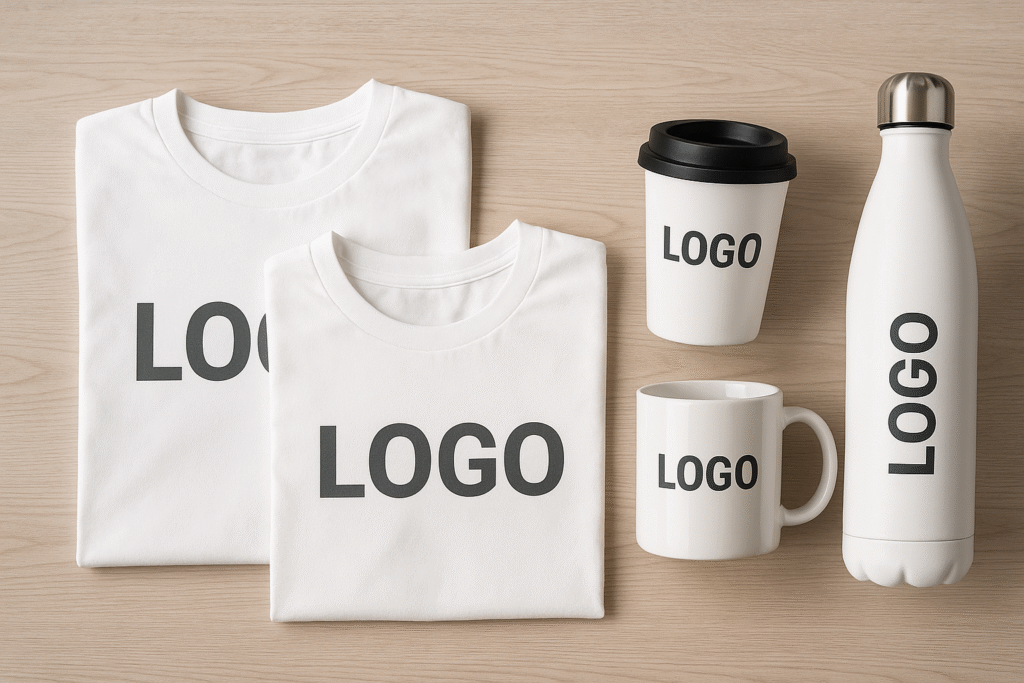
In today’s highly competitive business environment, marketers are constantly weighing their options to maximize visibility, customer engagement, and return on investment. Two popular strategies—custom promotional products and digital advertising—offer different paths to reach and influence audiences. But the big question is: which delivers more value in the long run?
This article dives deep into comparing the value of promotional products with digital ads, helping businesses—especially small and mid-sized ones—make an informed decision that aligns with their goals and budget.
What Are Custom Promotional Products?
Custom promotional products are branded items like pens, tote bags, water bottles, t-shirts, tech accessories, and more that are used to promote a business, event, or campaign. These physical products serve as long-lasting reminders of your brand, often used daily by recipients.
Key benefits:
- Long shelf life
- Physical brand presence
- High utility and visibility
- Tangible brand experience
What Are Digital Ads?
Digital advertising includes paid online placements such as Google Ads, Facebook and Instagram Ads, YouTube promotions, display banners, and email marketing. These ads target specific demographics, interests, or locations, and are designed to drive immediate clicks, traffic, or conversions.
Key benefits:
- Highly targeted
- Real-time analytics
- Fast visibility
- Scalable campaigns
Cost Comparison: Short-Term vs. Long-Term Investment
Digital ads typically operate on a pay-per-click (PPC) or impression model, meaning your exposure ends once your budget runs out. On the other hand, promotional products offer longer-lasting exposure for a one-time cost. For example, a branded mug or notebook may stay with a user for over a year, offering low cost per impression.
| Marketing Type | Average Lifespan | Cost per Impression (CPI) |
|---|---|---|
| Digital Ads | 1–7 days | High |
| Promotional Products | 6–12 months+ | Low |
Engagement and Recall: Who Sticks Longer?
A major advantage of custom promotional merchandise is its tactile nature. People tend to remember brands they’ve physically interacted with more than those they’ve seen on-screen for a few seconds. Studies show that promotional items have a higher recall rate than digital ads, which are often scrolled past or blocked entirely.
For example, a custom tote bag used daily can become a walking billboard, constantly reinforcing your brand. In contrast, digital ads often require multiple impressions to be remembered.
Trust and Perception: Physical vs. Digital
Custom branded items foster trust and goodwill. When people receive something useful, such as a branded water bottle, notebook, or pen, they perceive the company as generous, thoughtful, and credible. This can build long-term customer loyalty.
Digital ads, while effective in scale, are often perceived as intrusive or impersonal. Ad blockers and banner blindness are growing concerns that reduce their impact over time.
Analytics and Measurability
Digital ads have the edge in immediate data tracking. Marketers can monitor impressions, click-through rates, conversions, and engagement in real time. However, promotional products also offer tracking options—using QR codes, custom URLs, or coupon codes—to measure their marketing ROI.
When integrated smartly, custom promotional campaigns can generate measurable results comparable to digital ads.
Brand Longevity and Daily Use
Unlike digital ads, which vanish once the campaign ends, branded promotional items are physically present and often used daily. Whether it’s a branded T-shirt, reusable drinkware, or desk accessory, these products turn your customers into brand ambassadors.
This constant exposure leads to longer brand retention, even if the customer isn’t ready to buy immediately.
Final Verdict: Which Delivers More Value?
✅ Choose Digital Ads When:
- You need immediate traffic or conversions
- You want to run time-sensitive campaigns
- You need precision targeting with real-time data
✅ Choose Custom Promotional Products When:
- You want long-term brand visibility
- You aim to build trust and customer loyalty
- You seek low cost per impression and ongoing exposure
The most effective marketing strategy often lies in combining both. Use custom promotional products for relationship-building and digital ads for real-time engagement. Together, they offer a powerful marketing mix that delivers both short-term and long-term value.

